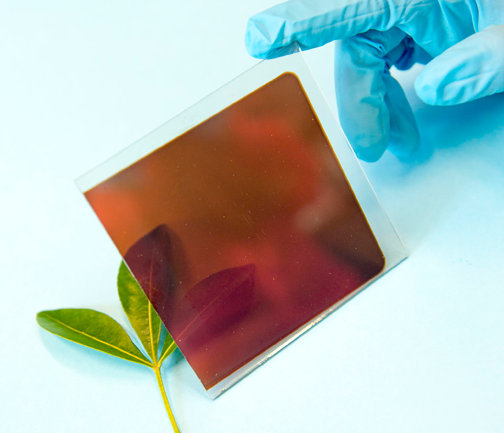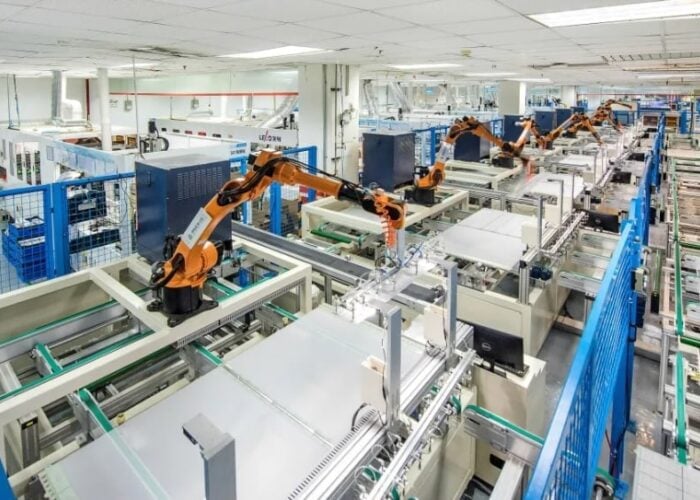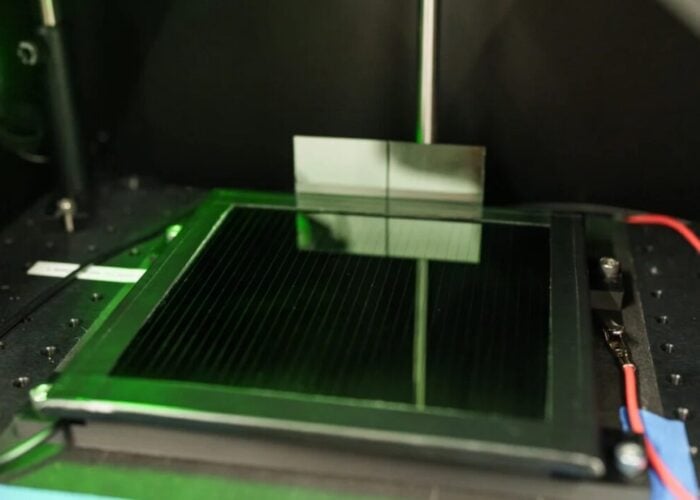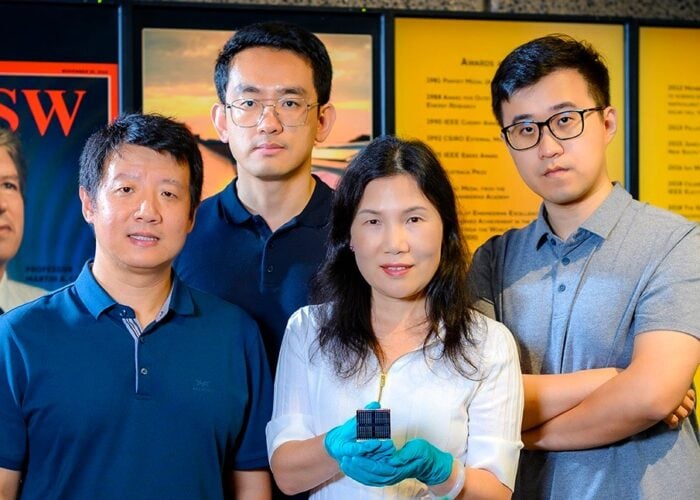
R&D group Solliance, which includes ECN, imec, TNO, Holst Centre and industrial partners such as Nano-C, Solartek, DyeSol and Panasonic have succeeded in producing a record 10% aperture area power conversion efficiency for an ‘up-scaled’ thin-film perovskite photovoltaic module.
Solliance said that the conversion efficiency was measured on an aperture area of 168 cm2, deployed with 25 serial connected cells through an optimized P1, P2, P3 interconnection technology. The PV module was realized on a 6×6 inch2 glass substrate using industrial scale-able slot die coating with laser patterning. Solliance used a flexible barrier film using a lamination process to encapsulate the cells.
Unlock unlimited access for 12 whole months of distinctive global analysis
Photovoltaics International is now included.
- Regular insight and analysis of the industry’s biggest developments
- In-depth interviews with the industry’s leading figures
- Unlimited digital access to the PV Tech Power journal catalogue
- Unlimited digital access to the Photovoltaics International journal catalogue
- Access to more than 1,000 technical papers
- Discounts on Solar Media’s portfolio of events, in-person and virtual
Or continue reading this article for free
Ronn Andriessen, Program Manager of the Perovskite based PV program at Solliance said, “The challenge is to upscale perovskite cells to larger size industrially process-able modules with high efficiency and long lifetimes at low cost. The current result, presented on an aperture area comparable to standard commercial silicon solar cells, shows that Solliance, with its in depth know how on processing of organic PV and CIGS and its vast Sheet-to-Sheet and Roll-to-Roll pilot production infrastructure, is excellently placed to realize this upscaling. These 10% up-scaled perovskite based PV modules are first and important steps in this development.”
Solliance is conducting advanced research on the development of Perovskite based PV modules. The latest mini-module had all solar cell layers processed in an ambient environment and at temperatures below 120⁰C. Deposition and interconnection technologies used for obtaining these results are said to be industrially available for Sheet-to-Sheet as well as for Roll-to-Roll manufacturing.
“We are confident to boost quickly the up-scaled Perovskite based PV module efficiency further above 15% by using very low cost materials and processes. But besides demonstrating the up-scalability of these highly efficient Perovskite based PV devices, we are also currently working hard to stabilize further the performance of these devices under real life operational conditions”, added Andriessen.
Solliance did not reveal degradation, stability or absolute lifetime parameters for the Perovskite based test modules.







